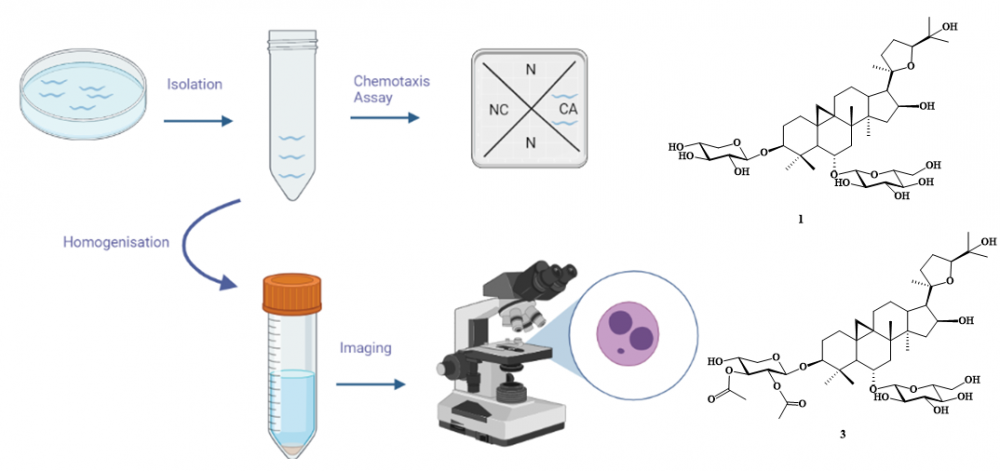JOURNAL 2694
Records of Natural Products
Year: 2023 Issue: 4 July-August
p.648 - 663
Viewed 2822 times.
GRAPHICAL ABSTRACT

ABSTRACT
Astragalus L., is the most populated plant genus on the planet. It has found use in folk medicine to treat many different forms of ailment. However, the toxicity studies of the genus and the chemicals isolated from it, are scarce and the toxicological profile is largely unknown. Caenorhabditis elegans has been used in multiple scientific disciplines. Its ease of use, genetic similarity to humans in many pathways, connectome and nervous system and resistance to environmental stress make it among the best organisms for toxicity testing. The present study used C. elegans chemotaxis responses, and micronucleus generation, to evaluate the potential neurotoxicity of some selected cycloartane-type glycosides; astragalosides IV (1) and VI (2), astrasieversianin II (3), baibutoside (4), and macrophyllosaponins B (5) and D (6), in the short- and long-term domain, along with long-term genotoxicity testing. The results indicate long-term chemotaxis inhibition by compounds 1, 2, 3 and 5, whereas only compound 3 inhibited chemotaxis in the short-term. Compound 1 was found to significantly increase micronucleus generation at the highest tested dose. The study demonstrates the usefulness of the Nematode Chemotaxis and in vivo Micronucleus Assays for the determination of the toxicity of natural products, while illuminating the points of consideration that future studies may be designed to address.
KEYWORDS- Caenorhabditis elegans
- chemotaxis
- toxicity testing
- experimental toxicology
- micronucleus
- cycloartane-type glycosides